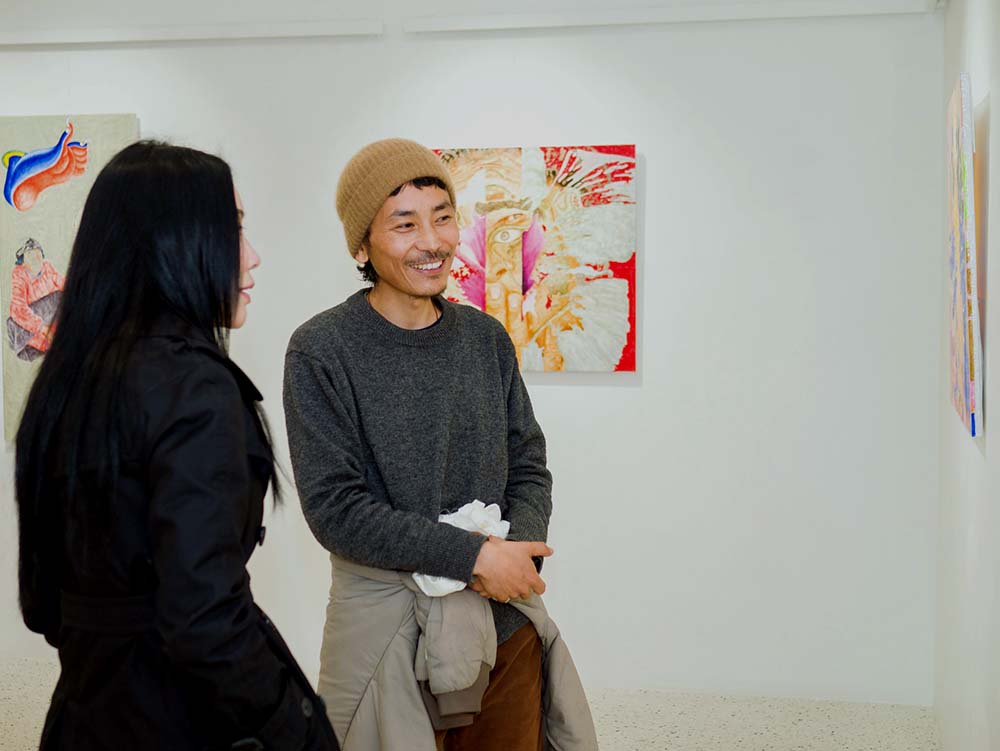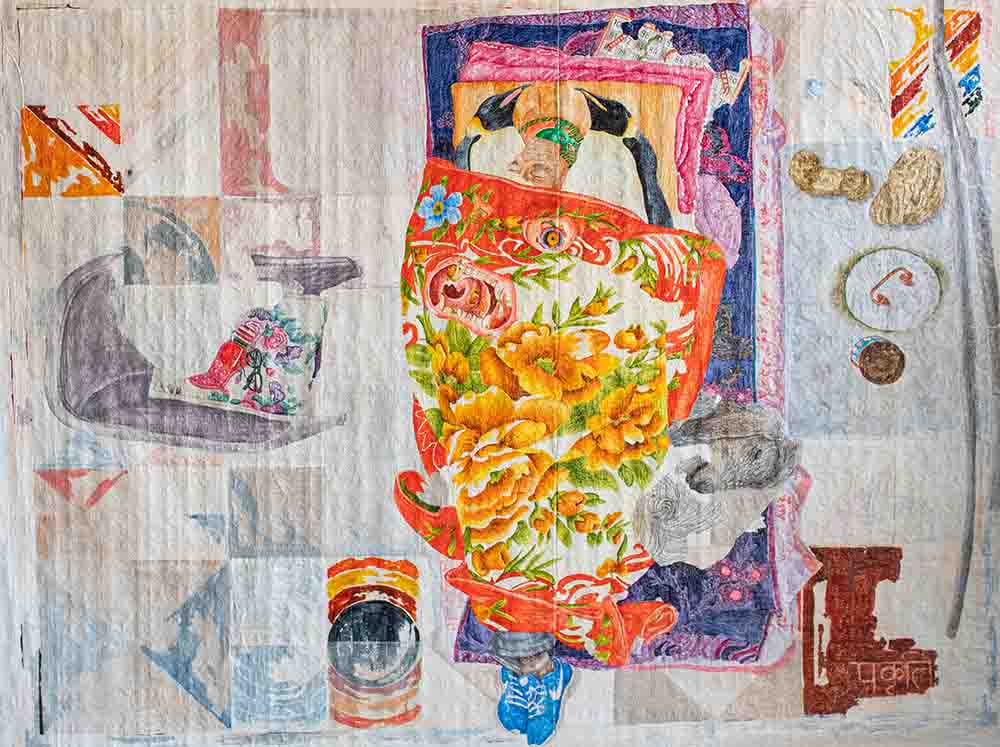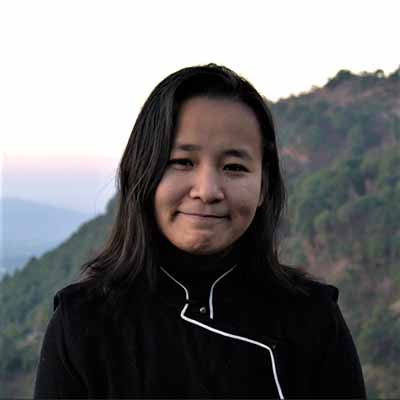Tibetan artist Tenzin Gyurmey Dorjee has told Choekyi Lhamo* that his storytelling through art layers complex issues with simple themes
I met Tenzin Gyurmey Dorjee on a cold winter morning prior to his second solo exhibition in the foothills of Dharamshala, a bustling small town where you find emigres of all kinds. ‘Behind the Two Mountains’ launch at The Other Space art gallery almost two years ago gave me an insight into the artist’s conception of his adolescence undergone decades ago during his school in the exile capital of the Tibetan diaspora. The display of his non-conformist ethics was already pertinent in his first important series of work showcased at the Windhorse Gallery in Kathmandu called ‘I Shouldn’t Be Here’ in 2022. This negation of self is almost as beautiful as it is painful.
In the newly launched series ‘Edible Flowers’ currently on display at the Takpa Gallery in Kathmandu till 10th March, Dorjee painstakingly rewrites his definition of love. The conception of his paintings relies on his engagement with the self and the other. The attempt to erase his own identity is a recurring theme; the mundane continues to be his canvas. The commonplace theme is not just in his ideas, but is palpable in his usage of tarp on which he carefully plays with his dream-like images.
“I’ve slowly found an interest in relationships. How a relationship builds up, how it is broken, and how it is rebuilt,” Dorjee told me over a phone conversation. All characters in the series depict real lives of his close ones, and the usage of the edible flowers does not seem accidental to me. In his own words, he says ‘edible’ sounds very practical whereas ‘flowers’ convey emotions. The two seemingly juxtaposed characteristics carry a different meaning, almost a “bipolar meaning”, he said.
The theme of this exhibition, unlike the other first two, takes us back to our complex relationship with family and how the conception of love has changed over time. The mundane here is crucial, as it takes us back to the things we have taken for granted. His favorite among this series is Arrow from my god in which his father is scratching his back, and he evokes emotions of loss in that particular painting, because now he has been replaced by the wood scratcher. “I’m more attached to him and it talks about my own kind of regret towards my family,” he explains why he remains connected with this one. But he continues to insist that he does not want to convey any message in his artwork. “I’m putting my audience inside my own limitation of knowledge, and I don’t want that,” Gyurmey insists that all his paintings should have different meanings every time one looks at it.
Titled artwork called Swimming lesson, Afternoon nap and Silence love are incredible depictions of everyday life but there is a dreamlike element to them, surreal and timely. ‘Swimming lesson’ draws on how the younger generation in their expression of love towards their parents tend to take elders to shopping malls, theaters and swimming pools. The ‘nap’ induces an ennui like the one Russian writer Dostoevsky employs in his storytelling, whereas the ‘love’ just shows two women just sitting and drinking from their cups in front of an eternal garden. “[It] is my intention not to convey my own message,” he said.
The mundane is not only limited to his themes, but the medium of material to convey these ideas are uniquely representative of where he is coming from. The taupe-colored sacks, drochak-bhureh, also known as barley sacks, were used to store food sent by the US government following tens of thousands of Tibetans becoming exiled after fleeing China’s occupation. The usage was primarily not as political as it is convenient, he started using them when he could not afford those expensive canvases. Now, it is a medium that is unique in his storytelling through art. “Most of my paintings are like that; it is very complex but I layer it up with a very simple theme,” he said.
Tenzin Gyurmey Dorjee hails from Kumrao village in Himachal Pradesh and is currently based in Dharamshala. His first two solo exhibitions have been successfully launched in Kathmandu and Dharamshala respectively. The current exhibition will be on display till March 10th, which is also celebrated as the Tibetan uprising day, coincidentally.
—
* Choekyi Lhamo is an MA student at the UC Berkeley Graduate School of Journalism. She was a former reporter at Phayul in Dharamshala. Her reporting interest lies in politics, culture and diaspora issues.





